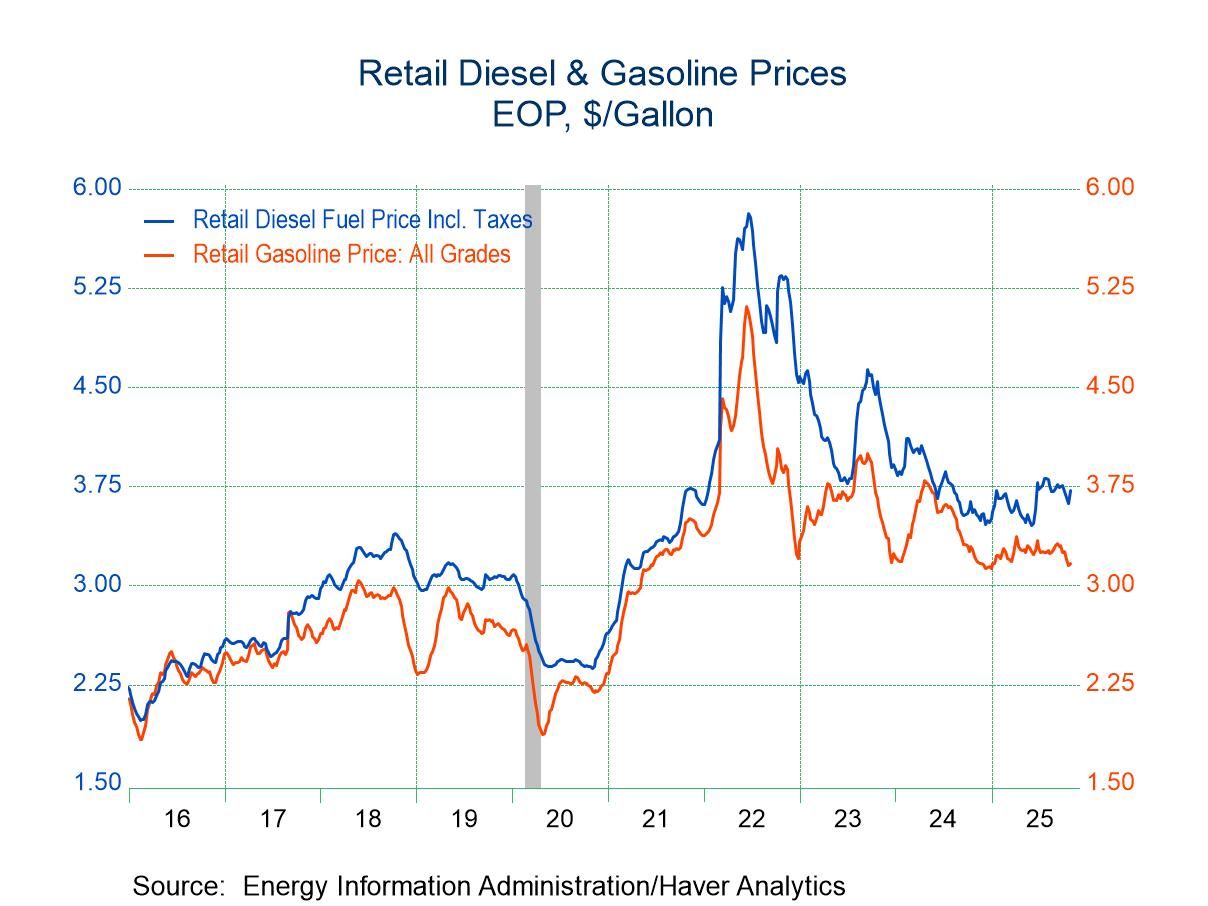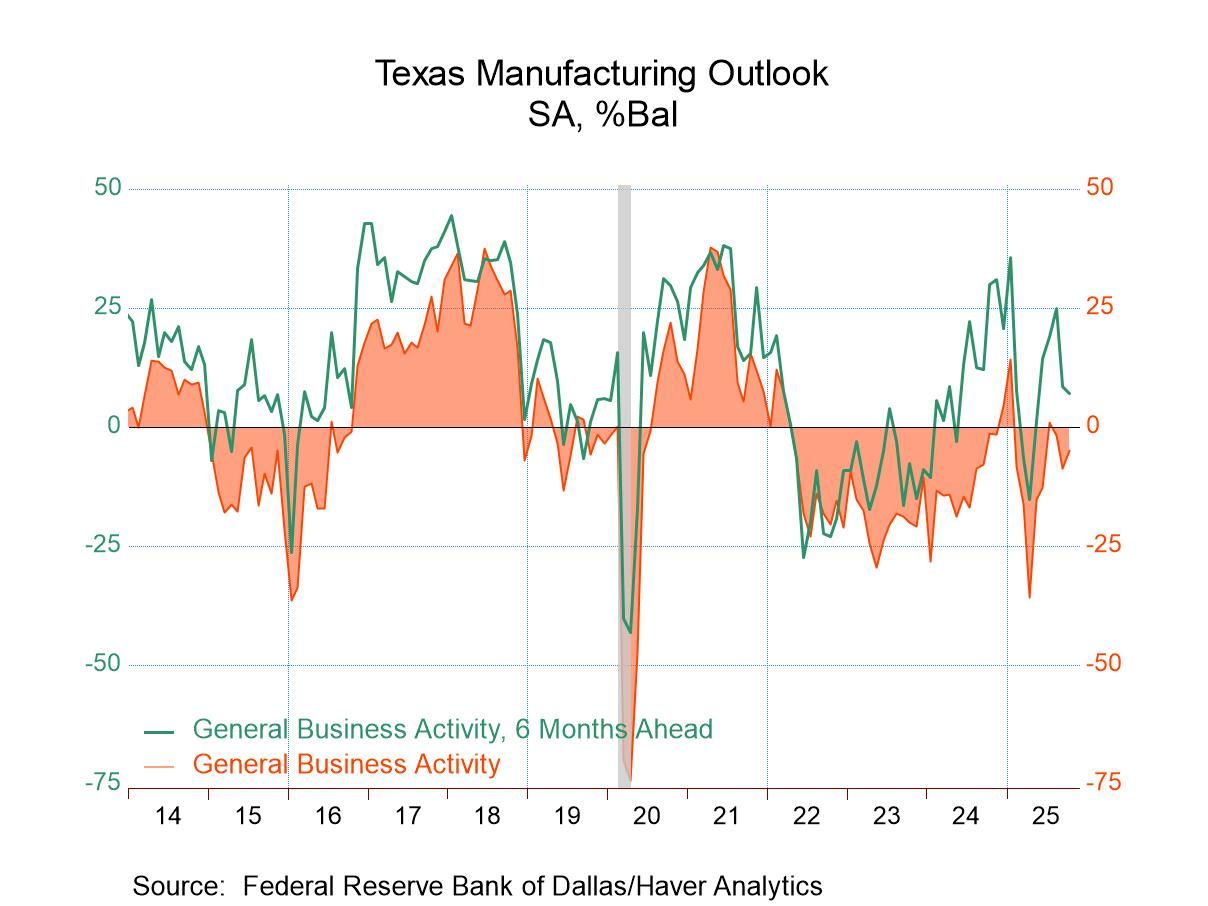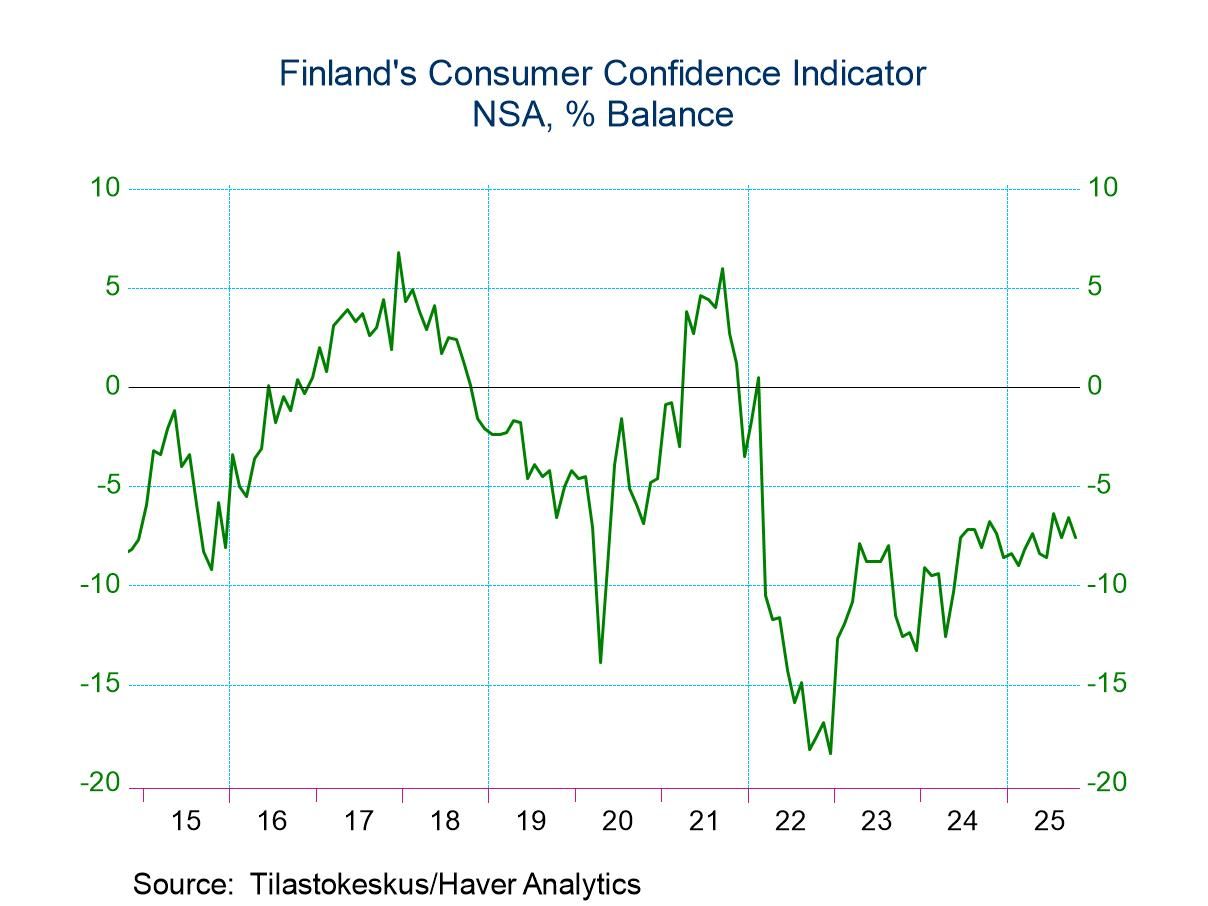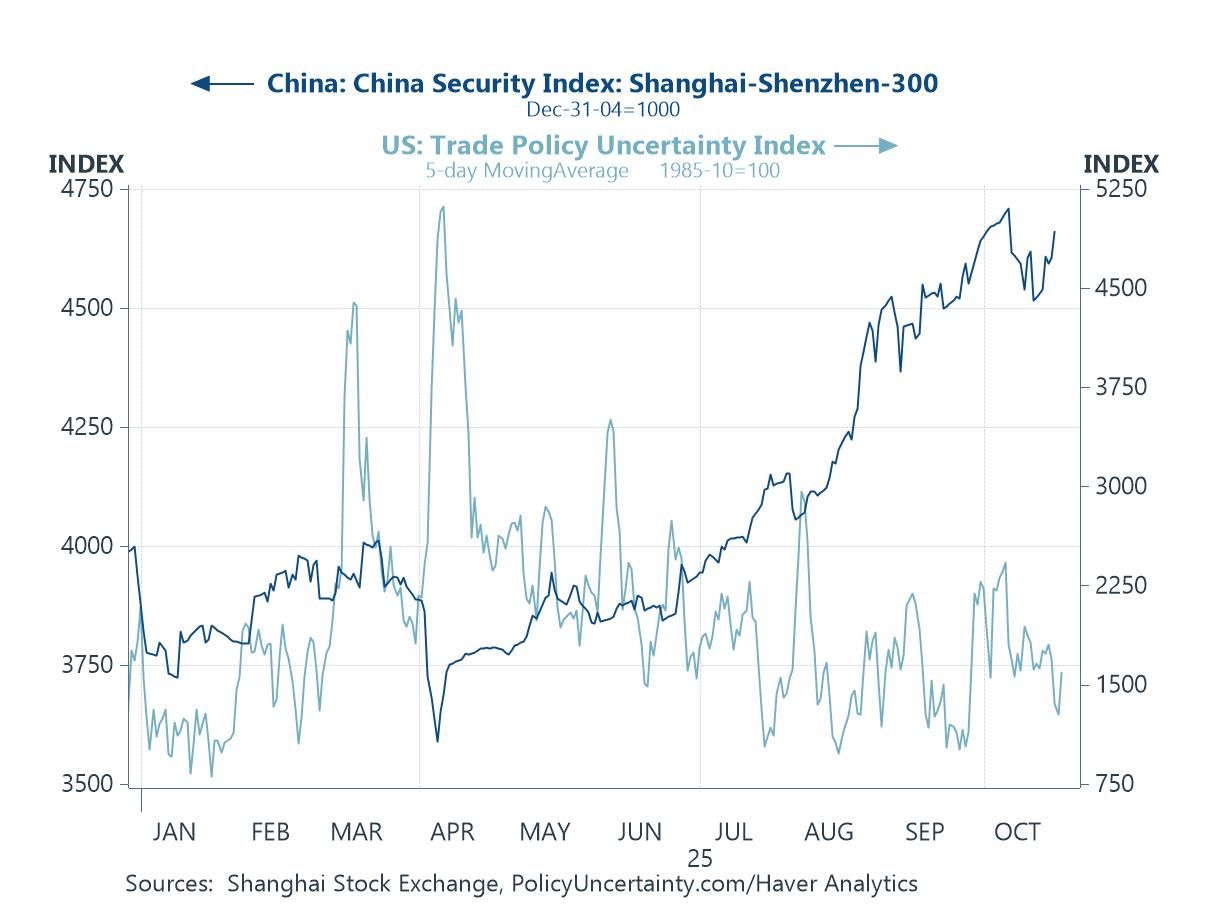U.S. Jobless Claims Less than Expected in Nov. 18 Week
Summary
- Initial claims in latest week down 24,000 from previous week.
- Continuing claims still high, but down from previous week.
- Insured unemployment rate holds at 1.2% for a seventh week.


Initial claims for unemployment insurance fell to 209,000, seasonally adjusted, in the week ended November 18, down 4.6% from a year ago and down from 233,000 in the November 11 week; that was revised from 231,000 reported initially. The latest tally is the lowest since the October 14 week. The Action Economics Forecast Survey had expected 225,000 in the latest week, that is, a much smaller decrease. The four-week average of initial claims is 220,000 in the November 18 week, down from 220,750 the week before.
Insured unemployment, also known as “continued weeks claimed” or “continuing claims,” was 1.840 million in the November 11 week, seasonally adjusted, up 24.0% from a year ago but down from 1.862 million in the November 4 week. These last two weeks, at 1.840 million and 1.862 million are the largest amounts of insured unemployment since similar amounts in the first two weeks of April.
The insured unemployment rate, that is, the number of continuing claims as a percent of covered employment, was 1.2% in the November 11 week, the same as in the prior six weeks; this has hovered between 1.1% and 1.3% since November 19, 2022, that is, for a whole year. The all-time low for this rate is 0.9%, last seen in the first week of October 2022.
The insured unemployment rates vary widely across states. In the week ended November 4, the highest rates were in California and New Jersey (both 2.0%), Puerto Rico (1.9%), Alaska and Hawaii (both 1.8%), New York (1.6%) and Massachusetts, Oregon, Rhode Island and Washington (all 1.5%). The lowest rates were in Alabama, Florida, Iowa, Kansas, Kentucky, Nebraska, New Hampshire, North Carolina and Tennessee (all 0.4%), North Dakota and Virginia (both 0.3%) and South Dakota (0.2%). Other large states were Pennsylvania (1.4%), Illinois (1.3%) and Texas (1.0%). These state data are not seasonally adjusted.
Data on weekly unemployment claims go back to 1967 and are contained in Haver’s WEEKLY database; they are summarized monthly in USECON. Data for individual states are in REGIONW back to December 1986. The expectations figure is from the Action Economics Forecast Survey, in the AS1REPNA database.


Carol Stone, CBE
AuthorMore in Author Profile »Carol Stone, CBE came to Haver Analytics in 2003 following more than 35 years as a financial market economist at major Wall Street financial institutions, most especially Merrill Lynch and Nomura Securities. She had broad experience in analysis and forecasting of flow-of-funds accounts, the federal budget and Federal Reserve operations. At Nomura Securities, among other duties, she developed various indicator forecasting tools and edited a daily global publication produced in London and New York for readers in Tokyo. At Haver Analytics, Carol was a member of the Research Department, aiding database managers with research and documentation efforts, as well as posting commentary on select economic reports. In addition, she conducted Ways-of-the-World, a blog on economic issues for an Episcopal-Church-affiliated website, The Geranium Farm. During her career, Carol served as an officer of the Money Marketeers and the Downtown Economists Club. She had a PhD from NYU's Stern School of Business. She lived in Brooklyn, New York, and had a weekend home on Long Island.






 Asia
Asia